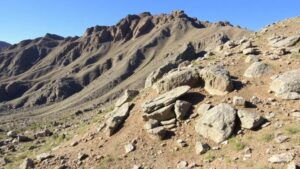Spotting Copper Deposits in Carbonate Replacement Environments
Spotting Copper Deposits in Carbonate Replacement Environments
Understanding how to locate copper deposits, particularly in carbonate replacement environments, is crucial for geologists and mining engineers. These environments are characterized by the transformation of limestone and similar carbonate rocks into mineral-rich zones through various geological processes. This article provides a comprehensive guide to spotting copper deposits in these unique formations.
The Geology of Carbonate Replacement Environments
Carbonate replacement environments occur where acidic fluids interact with carbonate rocks, such as limestone or dolostone. This interaction leads to the dissolution of carbonate minerals followed by the precipitation of other minerals, often including copper sulfides. The process is typically driven by hydrothermal activity, which introduces metal-rich fluids into these carbonate formations.
Key Characteristics of Copper Deposits
Copper deposits in carbonate replacement environments can exhibit several key characteristics:
- High-grade ore zones: These may contain substantial amounts of copper carbonate and copper sulfides, often forming replacement textures.
- Associated elements: Copper deposits are frequently accompanied by other valuable metals such as silver, lead, and zinc, which can indicate richer mineralization.
- Alteration zones: Look for secondary mineral formations, such as malachite or azurite, which suggest oxidation and the presence of copper.
Identification Techniques
Geologists employ various techniques to identify copper deposits in carbonate replacement settings:
- Geological mapping: Detailed mapping of surface expressions and geological features can reveal signs of mineralization.
- Geochemical sampling: Analyzing soil and rock samples for copper and associated elements helps locate potential deposits.
- Geophysical surveys: Techniques such as resistivity and induced polarization can help delineate areas of mineralization through subsurface imaging.
Casing Case Studies
Several notable case studies highlight the effectiveness of these techniques in spotting copper deposits in carbonate replacement environments:
- La Colorada, Mexico: This project showcased the successful application of geochemical sampling techniques, leading to the identification of significant copper reserves in altered limestone beds.
- Panamás Cobre Panamá: The mine integrated geological mapping and geophysical surveys to pinpoint high-grade copper deposits, resulting in one of the largest copper reserves globally.
Challenges in Exploration
While exploring for copper deposits in carbonate replacement environments can be rewarding, it is not without challenges:
- Complex geology: The heterogeneous nature of carbonate rocks can complicate modeling efforts, leading to uncertainties in deposit estimations.
- Environmental concerns: Exploration activities must be conducted responsibly, with efficient waste management to mitigate ecological impacts.
Conclusion
Spotting copper deposits in carbonate replacement environments requires a multifaceted approach encompassing geological, geochemical, and geophysical methods. By understanding the unique characteristics of these environments and utilizing advanced exploration techniques, geologists can more effectively identify and evaluate copper resources. As global demand for copper continues to rise, enhanced exploration practices will play an increasingly vital role in sustainable mining efforts.
Actionable Takeaways
For professionals looking to explore carbonate replacement environments for copper deposits, consider the following actionable steps:
- Conduct thorough geological mapping to understand the areas formation and alteration history.
- Employ a combination of geochemical sampling and geophysical surveys to maximize the chances of successful mineral identification.
- Stay informed about environmental regulations and best practices to ensure responsible exploration and mining activities.



